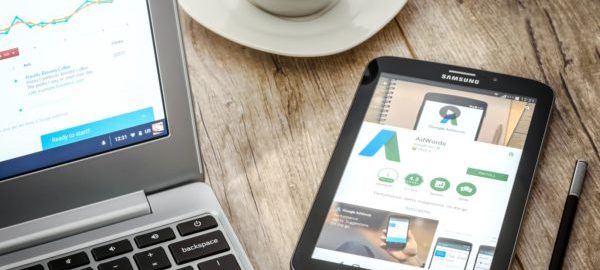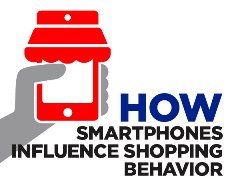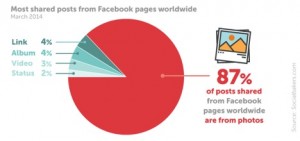Are you thinking about running digital ads for your startup? Or maybe you’ve already started running them but aren’t sure if you should continue?
This guide will help you understand the basic metrics you should be tracking, help you set benchmarks for success and advise you on how to evaluate the results of your campaigns.
If you want to learn how to assess your campaigns on both the ad and the landing page/website level keep reading!

1. Review Google Analytics
Once you launch your ad campaigns you’ll want to review the data that’s populating in your Google Analytics account. If you’re not used to working in Google Analytics the sheer number of data points that you can review inside your account can feel overwhelming.
To get started you’ll want to navigate to your traffic source overview section. Here you’ll see a performance overview of website traffic broken down by source.

Within this section you’ll want to find the traffic for your ad campaigns. Once you locate your traffic source you’ll want to review these three basic metrics:
- Bounce Rate: The bounce rate is a metric that tells you how many people visit your site and leave after only viewing one page. If you’re sending your paid traffic to a landing page with a form that returns a thank you message on the same page without redirecting to a Thank You page then a very high bounce rate makes sense as there is only one page to visit. However, most websites want to see a bounce rate of 40% or lower for their most important traffic sources (especially paid traffic).
If your bounce rate is very high this is an indication that your message isn’t resonating with the audience that is seeing your ads. In this case you have two options. First, you can adjust your targeting to narrow your audience down to the precise users who would find your product valuable. If you’re sure that your target audience is already narrowed down you should then try changing your messaging. Perhaps try highlighting a different benefit in your ad.
Finally be sure that your ads and landing pages have message match, meaning the words you use in the ad are immediately reflected in the landing page. This lets a viewer immediately know that he or she is in the right place based on the ad that was clicked.
- Time on Site: In addition to Bounce Rate you’ll also want to review your Time On Site metric. How long are people staying on your site? Is it long enough to consume the message that you’re trying to convey? In most cases an average visit time of under 30 seconds means you’re wasting your ad money.
If your Time on Site is very low you may want to consider changing the design of your site to be more visually pleasing and user friendly. You may also consider re-writing or re-working your copy so that it’s easily readable and scannable. People searching online are often put off by long paragraphs. According to HubSpot, “any paragraph over five lines can be hard to digest” and therefore may be skipped.
Finally, you may consider putting a explainer video on your landing page. A good video can help improve your Time on Site metric by capturing the attention of a visitor who is uninterested in reading. This is particularly helpful for products or services that are difficult to describe, or would require a lot of words to explain.
- Conversion Rate: Perhaps the most important metric that you will want to track in Google Analytics is your conversion rate. Your conversion rate tells you what percentage of people who visit your site go on to because a lead or customer.
In order to track your conversion rate you’ll need to set up at least one Goal inside of your Google Analytics account. You do this by navigating to the Admin section of Google Analytics and then diving into the Goals section.
From there click +New Goal and you’ll be guided through a short setup wizard.

I would suggest setting up a goal to track every time someone registers for your newsletter, submits their info via a lead gen form or completes a purchase.
Once your Goals are setup you’ll start seeing how many completions you receive along with the rate at which people are converting in your traffic sources section.
Average conversion rates vary by industry, but in general aiming for at least 3% to start is a good goal for text based ads like Google AdWords text ads and Facebook ads.
As you get more comfortable with Google Analytics there are plenty of other ways to use the software to gain advanced insights – like calculating your Cost Per Acquisition. Google offers a free online course you can take to learn how to use the software fully.
2. Review Ad Metrics
In addition to staying on top of your core Google Analytics website metrics you’ll also need to make yourself very familiar with several ad campaign metrics. These are data points that you’ll find inside of your ad dashboard.

While most ad platforms will show you a variety of different metrics, you can focus in on these three to get started:
- Click-through rate (CTR): The CTR of your ads tells you what percentage of people who see your ad actually click on it. The average CTR is 2% across the board so you’ll want to achieve at least 2%, although aim for higher once you get the hand of online advertising.
If your CTR is lower than 2% that tells you a couple of important things. First, your CTR may be low because your targeting is off. If you’re not showing your ad to the right people of course they aren’t going to click! When my CTR is low the first thing I do is review my targeting and make sure it’s precise.
For example if you are a flower delivery service running Google Adwords make sure you’re bidding on keywords like “flower delivery in [city]” or “next day flower delivery service” instead of something super generic like “gift ideas.”
If your targeting is on point, then you’ll want to look at the copy in your ads. Is the benefit clear? Do you offer a competitive advantage? Be sure your ad copy reflects the best offer / benefit that you can give to people.
The better the offer, the higher your CTR is likely to be. Just don’t lie or deceive people because that will create a negative experience for both the user who may then go on to complain about your brand.
- Cost per click (CPC): Your CPC is how much you’re paying each time someone clicks on one of your ads. The cost for campaigns is totally dependent on your targeting parameters and how many other people are bidding on these same keywords or audience profiles.
You can research the average CPC for your AdWords keywords using a tool like Google Keyword Planner or SEMRush. If the CPC that you’re paying is higher than the average cost then you’ll want to do whatever you can to improve it.
In most cases a company pays a high CPC because their Google Quality Score is low. According to Google, “Quality Score is an estimate of the quality of your ads, keywords and landing pages. Higher quality ads can lead to lower prices and better ad positions.” You can check your Google Quality Score here.
To improve your quality score make the following changes:
1. Make sure your ad copy includes the keywords that you’re bidding on.
2. Make sure the landing page you’re linking to includes the keywords that you’re bidding on.
3. Make sure your landing page loads quickly. Having a lot of redirects or a slow server can slow your site down and contribute to a low quality score.
Once you optimize your ads and landing pages you should see an uptick in your Google Quality Score and a decrease in your CPC!
- Frequency: When running ads based on audience profiles rather than keywords, like you do on Facebook, Instagram, Twitter and other social networks, you’ll want to keep an eye on frequency. Frequency is the metric that tells you how many times a single person has seen your ad.
In general you want to achieve a frequency between 5 and 7. This ensures that a person sees your ad enough times to remember it and/or take action without bombarding and annoying them.
Consider that if an ad is only shown to someone 1 or 2 times they may scroll past it and miss it. On the flip side if an ad is shown to someone 10 or more times that may become annoying. At that point there is very little chance that someone has missed or ignored the ad every time it’s been shown. At that point they are uninterested and possibly annoyed.
Why pay money to continue showing your ads to people who are uninterested? It doesn’t make sense.
Review Branding Metrics
While optimizing down your cost-per-click and achieving the highest conversion rate possible is highly important, you should also consider the impact paid campaigns have on your branding metrics.
When you start running digital ad campaigns keep an eye on the following brand awareness metrics:
- Social media mentions: The number of people who are talking about you on social networks. You can track this number using software like Mention that allows you to pull reports based on your number of mentions and the number of times people use a branded hashtag in real-time.
While someone might not convert on your website right away (especially if you have an expensive product or service), your ads may lead to social conversations and that’s important too. Be sure to respond to all questions and concerns!
- Press mentions: In addition to social media mentions you may also begin getting press mentions. After all, it’s not just potential customers who may be targeted by your ads. Journalists and bloggers who write about your industry may also be targeted and thus may reach out for an interview, or may cover you on their own.
Be sure to set up Google Alerts for your brand name so that you’re aware of any press coverage!
- Increase in branded organic traffic: In many cases brands will see a lift in organic traffic one paid campaigns kick off. This is because visitors may initially find your site via a paid off but not convert during their first visit for a variety of reasons. Maybe they were pressed for time, or maybe they didn’t have their credit card handy. Whatever the case may be they may bounce and then come back later via organic traffic.
Keep an eye on the number of people who get to your website via a branded search. If you see an increase in this traffic and can’t attribute it to anything specific (like a press mention), then it’s fair to say the increase in organic traffic may be the result of your paid campaigns.
You can check your branded search volume in Google Analytics by going to: Acquisition>Campaigns>Organic Keywords and then looking for your brand name.
- Conversions from branded organic traffic: In addition to tracking any increase in branded organic traffic, be sure to also track whether conversions are going up for your organic branded traffic. It’s possible that your paid traffic visitors are not converting on the first visit but go on to convert on a subsequent visit!
While most bootstrapped startups are cautioned against running paid branding campaigns because they may not produce results right away, branding is important and if you can get a branding lift from your paid campaigns that is always a plus!
Getting Started
Now that you know the basics of what to look for in a paid ad campaign it’s time to get started!
I know it can be scary to flip the switch on a paid campaign because you don’t want to lose out on your hard earned money, but remember you’ll lose 100% of the chances you don’t take. Plus, now that you know what ad metrics lead to success you’ll know whether your ad campaigns are performing well or not. If they are not generating good results for you then you can always turn them off.
That’s the beauty of running ads on networks like Google, Facebook and Twitter: there is no minimum buy so you don’t have to be afraid of losing out on thousands of dollars like you would if you ran a television or radio campaign!
Business & Finance Articles on Business 2 Community(100)





